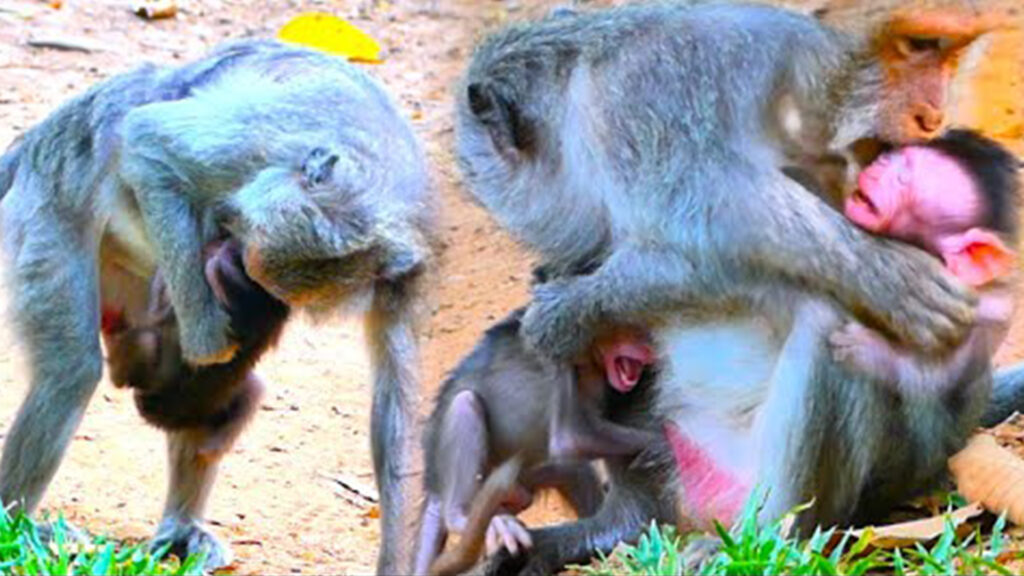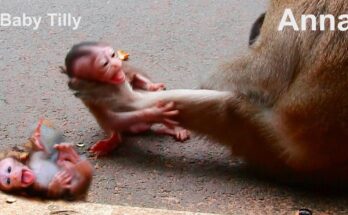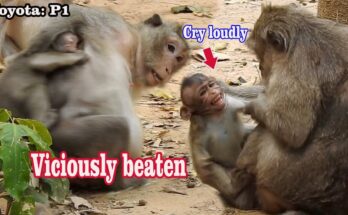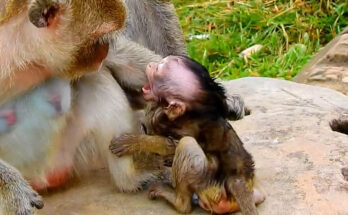
It’s truly heartbreaking and puzzling to witness moments when a mother monkey, like Jade, appears to hurt her tiny baby with such aggression. The scene is almost too painful to watch. The tiny infant, unable to defend itself, cries desperately, its voice shaking with terror and pain. The mother, who should be a source of warmth, protection, and comfort, suddenly becomes a source of fear.
Why does this happen? In the wild, such behavior can be linked to a range of factors. Sometimes, mother monkeys, especially younger or inexperienced ones, struggle to understand their role and can misinterpret the infant’s cries as threats or irritations. In other instances, environmental pressures like scarce food or the presence of dominant males can cause heightened stress and aggression, making the mother react harshly. It doesn’t justify the cruelty we witness, but it can shed some light on why it occurs.
Another reason can be illness or injury within the infant itself. In rare cases, mother monkeys reject or mistreat an infant that appears weakened or sick, an instinct shaped by the harsh realities of survival. Sometimes the behavior we witness is a harsh reflection of nature’s brutal side.
Observing such moments reminds us that wildlife operates within its own boundaries and rules — a world shaped by instinct, competition, and survival. It’s heartbreaking for us, as humans, to witness the tiny baby’s cries, but it is a reminder that nature doesn’t always align with our understanding of nurturing and love.
While these moments can be upsetting, they also teach us about resilience, vulnerability, and the delicate balance of life within animal communities. What we can hope for is that, in the end, the tiny baby finds its strength and the protection it needs to survive.


